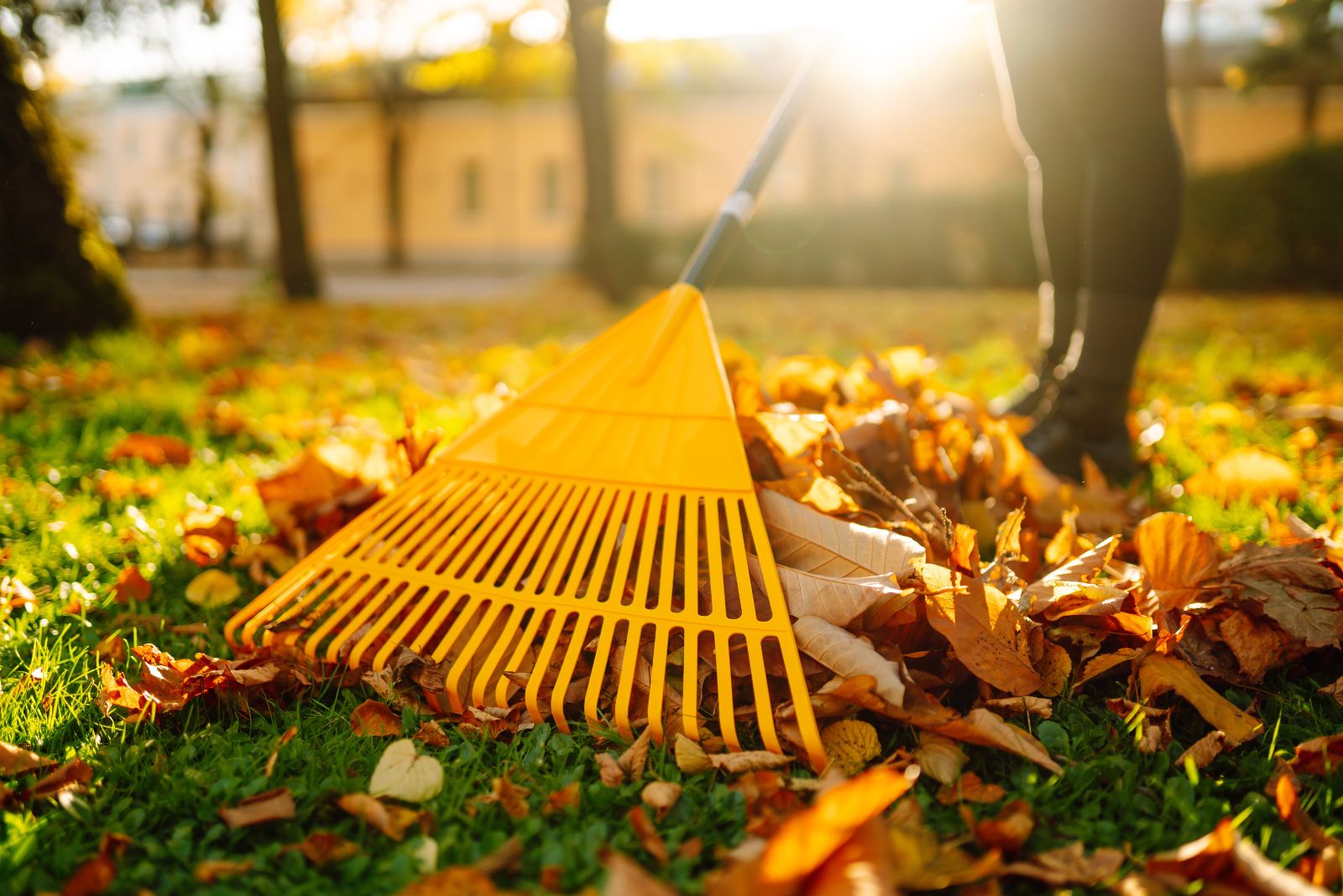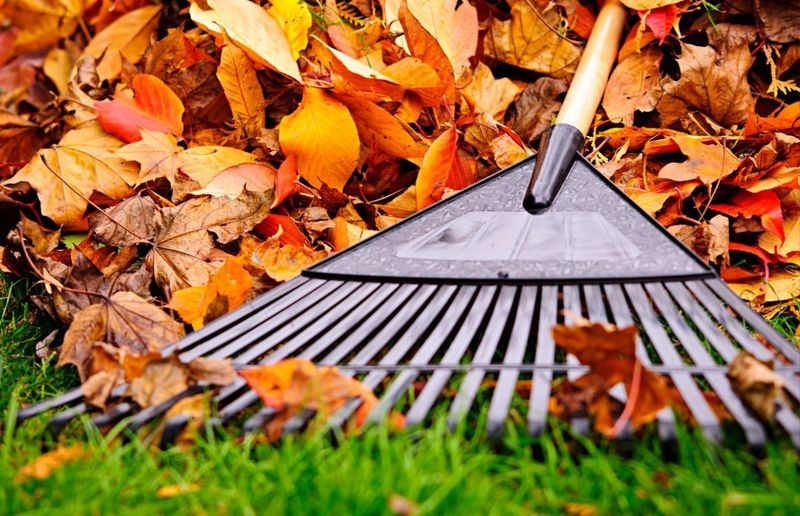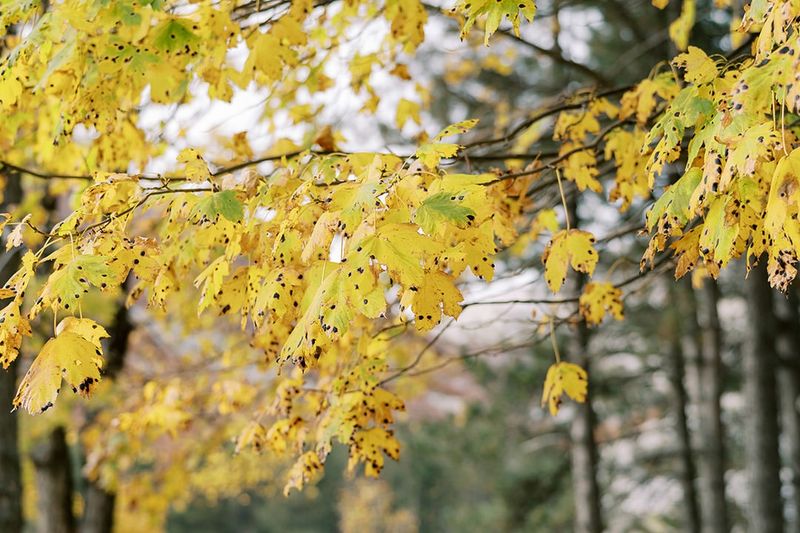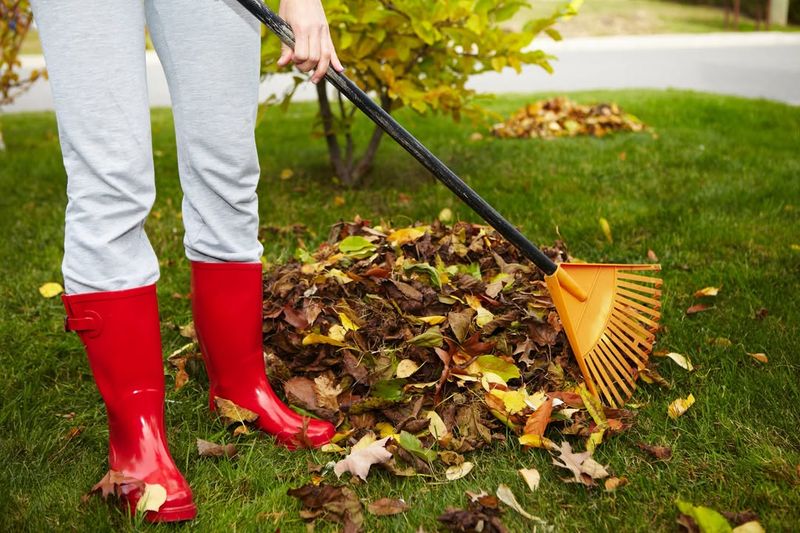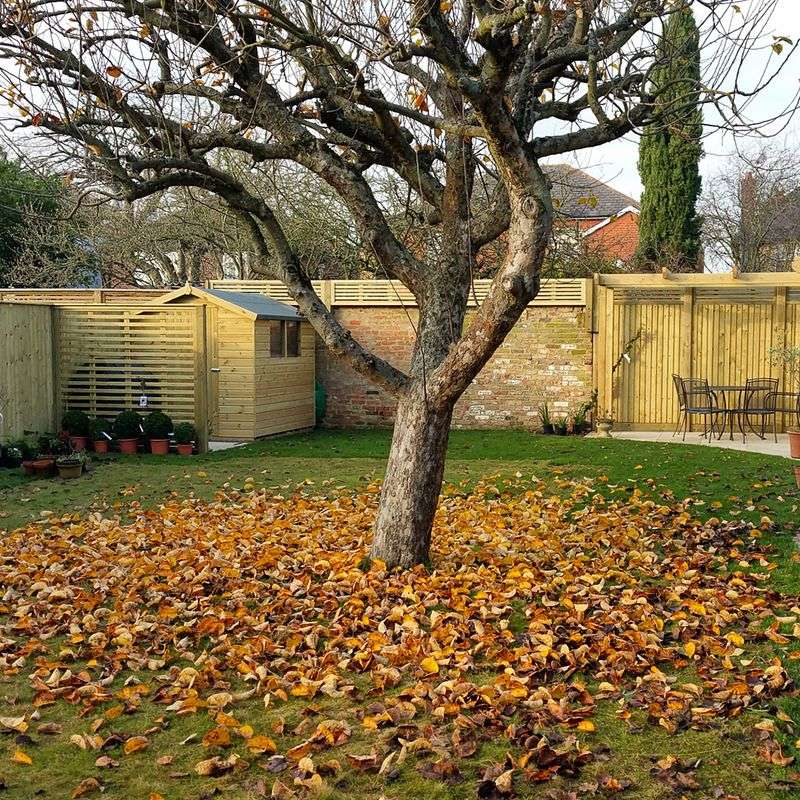Leaves drifting into your yard can seem harmless at first, but when they pile up day after day, the frustration can stack up just as fast.
Many Kansas homeowners find themselves stuck in the middle, wondering who carries the real load when a neighbor’s tree sends a steady shower of leaves across the property line.
The answer is not always what folks expect. Understanding how responsibility falls can save time, prevent arguments, and keep neighborly peace from blowing away with the autumn breeze.
1. Kansas Law Says You Own The Cleanup
Kansas follows what legal experts call the “natural condition” rule when it comes to falling leaves. Basically, if leaves from your neighbor’s healthy tree land on your property, cleaning them becomes your job, not theirs.
Leaves are considered a natural part of owning property near trees. Courts generally don’t make neighbors responsible for normal leaf fall, even when their tree hangs over your fence line. Think of it like rain—nobody controls where it lands, so property owners handle what falls on their side.
2. Property Line Determines Your Rights
Where the tree trunk sits matters more than where the branches reach. If the entire trunk grows on your neighbor’s side of the property line, that tree belongs to them completely.
Even when branches stretch over your yard and drop leaves, you can’t demand your neighbor remove the tree or clean your space. However, you do have the right to trim branches hanging over your property line, as long as you don’t damage the tree’s health. Just stay on your side when cutting!
3. Diseased Or Damaged Trees Change Everything
Here’s where things get different: if your neighbor’s tree is sick, dying, or obviously damaged, they might be held responsible for problems it causes. A dead branch crashing through your fence or damaging your roof isn’t just bad luck – it could be negligence.
Kansas law expects property owners to maintain their trees reasonably. When a clearly unhealthy tree drops excessive debris or poses danger, your neighbor could be liable. Document the tree’s condition with photos before discussing concerns with them or seeking legal advice.
4. Communication Prevents Neighborhood Conflicts
Most leaf disputes get solved with a simple, friendly conversation rather than lawyers or lawsuits. Knocking on your neighbor’s door to discuss the situation often leads to compromise solutions that work for everyone involved.
Maybe they’ll help with occasional cleanup, or perhaps you can work together on trimming overhanging branches. Some neighbors in Kansas even share yard work costs or trade favors. Building good relationships makes living side-by-side much easier than fighting over every fallen leaf that crosses the property line.
5. Prevention Beats Constant Cleanup Battles
Smart homeowners focus on preventing leaf problems rather than arguing about who caused them. Installing leaf guards, strategic fencing, or planting your own border shrubs can reduce how many leaves invade your space each season.
Regular maintenance schedules make the job less overwhelming too. Raking weekly during fall takes less effort than tackling massive piles monthly. Some Kansas residents even invest in leaf blowers or mulching mowers that turn cleanup into quick, easy tasks instead of exhausting weekend projects.

